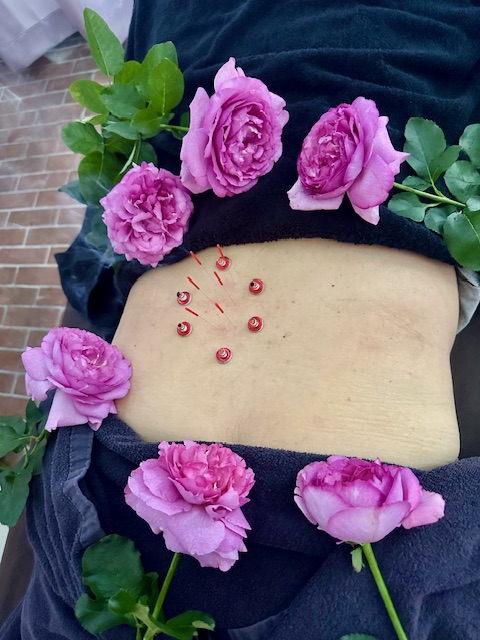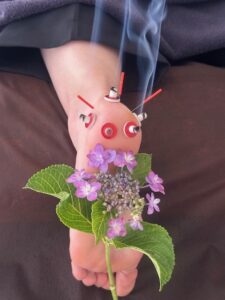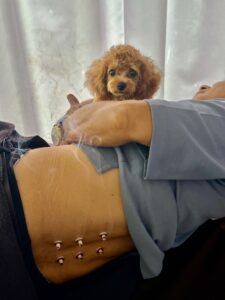ぎっくり腰
#slippeddisk #backpain

腰痛は大きく2つに分けられ、発症して間もない急性腰痛と、発症してから3カ月以上続く慢性腰痛です。ぎっくり腰は急性腰痛の通称です。急性腰痛はおよそ1~3週間前後で自然と軽快することが多いです。
ぎっくり腰は急性腰痛の通称です。重いものを持ち上げる、中腰から立ち上がる、上半身をひねるなどの動作をきっかけに、激しい痛みが腰に起こります。痛みが少し楽になる姿勢もありますが、少しでも動くと強い痛みが起こり歩行も出来ない時もあります。数日から数週間で痛みは消えますが、ある程度まで痛みが緩和して、そのまま慢性腰痛に移行することもあります。
急性腰痛の原因疾患として主なものとしては次のものがあります、
筋肉や靭帯から痛み:腰を支えている筋肉や靭帯が損傷を受けたり、炎症を起こしたりすると痛みを生じます。腰に力を入れたりひねったりすることで痛みが出ます。
椎間関節の痛み:腰の骨と骨をつないでいる、関節の部分で変形や炎症が起こると痛みを生じます。腰をそらすと痛みが走ります。
椎間板の痛み:骨と骨の間のクッションの役目をする軟骨が椎間板ですが、この椎間板が損傷をうけると痛みの原因となります。腰を前に曲げたり、姿勢を戻したりするときに痛みが出ます。
神経の痛み:傷んだ椎間板や変形した骨が神経を刺激するとおしりの部分や脚にしびれや痛みを感じるようになります。腰の痛みだけでなく、脚のほうへ痛みやしびれが走ります。
骨の痛み:骨がもろくなり骨折してたり、加齢変性で骨が変形することで痛みの原因となります。じっとしている状態では大丈夫ですが寝た状態から起き上がるときに強烈な痛みを感じます。
ぎっくり腰の予防ですが、床のものを拾う時に腰を曲げるのではなく、膝を曲げたり左右の足を前後にずらし腰を落として拾う、物を持ち上げるときに腰を曲げずに背骨を伸ばして持ち上げる、物を持つときは物を体から離さないようにする、などの日常生活動作の見直しも重要です。また、脊椎を支える脊椎周囲の筋肉の柔軟性を高めるストレッチ、腹筋・背筋の運動を行い筋力を鍛えることも効果があります。
Back pain can be divided into two main categories: acute back pain, which occurs shortly after onset, and chronic back pain, which lasts more than three months after onset. A hiccup is a common name for acute back pain. Acute back pain often resolves spontaneously in approximately one to three weeks.
Giggle back is a common name for acute back pain. Severe pain in the lower back is triggered by lifting heavy objects, standing up from mid-back or twisting the upper body. The pain may ease a little in some positions, but even the slightest movement can cause severe pain and sometimes walking is not possible. The pain disappears after a few days or weeks, but it may ease to a certain extent and then go straight to chronic back pain.
The main diseases that cause acute back pain include
Pain from muscles and ligaments: pain occurs when the muscles and ligaments that support the lower back are damaged or inflamed. Pain can be caused by straining or twisting the lower back.
Pain in the intervertebral joints: pain occurs when the joints, which connect the bones of the lower back, become deformed or inflamed. The pain is felt when the lower back is displaced.
Intervertebral disc pain: the cartilage that acts as a cushion between the bones is the intervertebral disc, and damage to this disc can cause pain. Pain occurs when bending forward or backward at the waist.
Nerve pain: a damaged disc or deformed bone can irritate the nerves, causing numbness and pain in the hips and legs. The pain and numbness runs towards the legs as well as the lower back.
Bone pain: bones can become brittle and fracture or become deformed due to age-related degeneration, which can cause pain. The pain is fine when sitting still, but intense when getting up from a sleeping position.
Prevention of back pain: it is important to review daily activities such as bending the knees or shifting the left or right leg back and forth to pick up an object on the floor instead of bending at the waist, stretching the spine instead of bending at the waist when lifting an object, and keeping the object away from the body when holding it. Stretching to increase the flexibility of the muscles around the spine that support the spine and exercising the abdominal and back muscles to strengthen the muscles can also help.


